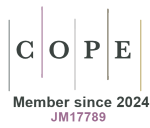Cost-utility of dalbavancin in patients with non-severe ABSSSI in Italy
DOI:
https://doi.org/10.33393/grhta.2020.2138Keywords:
Cost-effectiveness analysis, Cost-utility analysis, Dalbavancin, Staphylococcal skin diseasesAbstract
Introduction: Acute Bacterial Skin and Skin Structure Infections (ABSSSIs) include all complicated skin and soft tissue infections. The aim of this study was to conduct a cost-utility analysis to compare dalbavancin with standard antibiotic therapies for the management of non-severe ABSSSIs from the National Health Service (NHS) perspective.
Methods: A probabilistic decision tree model was developed considering a 30-days follow-up to simulate the therapeutic pathway of a patient treated with dalbavancin or Standard of Care (SoC). The model considered three mutually exclusive health states: a) discharge of patients from the emergency department, b) discharge of patients after one night from admission, c) discharge after 24 or 36 hours from admission. A one-way deterministic sensitivity analysis and a probabilistic sensitivity analysis were conducted.
Results: The analysis showed that the use of dalbavancin in patients with non-severe ABSSSI compared to SoC could generate a reduction in costs (– € 291.6 per patient treated) and an increase in QALYs (+0.0018 per patient treated). In 99.7% of the simulations carried out, dalbavancin was dominant compared to the SoC. Considering a threshold for the willingness to pay of € 30,000 for QALY gained, the minimum level of efficacy of dalbavancin so that the treatment can be considered cost-effective compared to the SoC was equal to 69.4%.
Conclusions: The analysis showed that dalbavancin may represent a cost-effective option compared to SoC for the treatment of patients with non-severe ABSSSI.
References
- The United States Food and Drug Administration. Guidance for Industry Acute Bacterial Skin and Skin Structure Infections: Developing Drugs for Treatment. 2013. https://www.fda.gov/media/71052/download
- Stevens DL, Bisno AL, Chambers HF et al; Infectious Diseases Society of America. Practice guidelines for the diagnosis and management of skin and soft tissue infections: 2014 update by the Infectious Diseases Society of America. Clin Infect Dis. 2014;59(2):e10-e52. https://doi.org/10.1093/cid/ciu296 PMID:24973422
- Garau J, Ostermann H, Medina J et al; REACH study group. Current management of patients hospitalized with complicated skin and soft tissue infections across Europe (2010-2011): assessment of clinical practice patterns and real-life effectiveness of antibiotics from the REACH study. Clin Microbiol Infect. 2013;19(9):E377-E385. https://doi.org/10.1111/1469-0691.12235 PMID:23663184
- Pollack CV Jr, Amin A, Ford WT Jr et al. Acute bacterial skin and skin structure infections (ABSSSI): practice guidelines for management and care transitions in the emergency department and hospital. J Emerg Med. 2015;48(4):508-19. https://doi.org/10.1016/j.jemermed.2014.12.001 PMID:25605319
- Esposito S, Bassetti M, Concia E et al; Italian Society of Infectious and Tropical Diseases. Diagnosis and management of skin and soft-tissue infections (SSTI). A literature review and consensus statement: an update. J Chemother. 2017;29(4):197-214. https://doi.org/10.1080/1120009X.2017.1311398 PMID:28378613
- Russo A, Concia E, Cristini F et al. Current and future trends in antibiotic therapy of acute bacterial skin and skin-structure infections. Clin Microbiol Infect. 2016;22(suppl 2):S27-S36. https://doi.org/10.1016/S1198-743X(16)30095-7 PMID:27125562
- Hall RG II, Smith WJ, Putnam WC, Pass SE. An evaluation of tedizolid for the treatment of MRSA infections. Expert Opin Pharmacother. 2018;19(13):1489-94. https://doi.org/10.1080/14656566.2018.1519021 PMID:30200779
- Bassetti M, Peghin M, Castaldo N, Giacobbe DR. The safety of treatment options for acute bacterial skin and skin structure infections. Expert Opin Drug Saf. 2019;18(8):635-50. https://doi.org/10.1080/14740338.2019.1621288 PMID:31106600
- Guervil DJ, Kaye KS, Hassoun A et al. Ceftaroline fosamil as first-line versus second-line treatment for acute bacterial skin and skin structure infections (ABSSSI) or community-acquired bacterial pneumonia (CABP). J Chemother. 2016;28(3):180-6. https://doi.org/10.1179/1973947815Y.0000000010 PMID:25817579
- Jauregui LE, Babazadeh S, Seltzer E et al. Randomized, double-blind comparison of once-weekly dalbavancin versus twice-daily linezolid therapy for the treatment of complicated skin and skin structure infections. Clin Infect Dis. 2005;41(10):1407-15. https://doi.org/10.1086/497271PMID:16231250
- Boucher HW, Wilcox M, Talbot GH et al. Once-weekly dalbavancin versus daily conventional therapy for skin infection. N Engl J Med. 2014;370(23):2169-79. https://doi.org/10.1056/NEJMoa1310480 PMID:24897082
- McCurdy SP, Jones RN, Mendes RE et al. In vitro activity of dalbavancin against drug-resistant Staphylococcus aureus isolates from a global surveillance program. Antimicrob Agents Chemother. 2015;59(8):5007-9. https://doi.org/10.1128/AAC.00274-15 PMID:25987636
- Bassetti M, Peghin M, Carnelutti A, Righi E. The role of dalbavancin in skin and soft tissue infections. Curr Opin Infect Dis. 2018;31(2):141-7. https://doi.org/10.1097/QCO.0000000000000430 PMID:29298166
- European Medicines Agency (EMA). Xydalba. Riassunto delle caratteristiche del prodotto. https://www.ema.europa.eu/en/documents/product-information/xydalba-epar-product-information_it.pdf.
- Guest JF, Esteban J, Manganelli AG et al. Comparative efficacy and safety of antibiotics used to treat acute bacterial skin and skin structure infections: results of a network meta-analysis. PLoS One. 2017;12(11):e0187792. https://doi.org/10.1371/journal.pone.0187792 PMID:29136035
- Gonzalez PL, Rappo U, Akinapelli K et al. Treatment of acute bacterial skin and skin structure infection with single-dose dalbavancin in persons who inject drugs. Drugs Context. 2018;7:212559. https://doi.org/10.7573/dic.212559 PMID:30574170
- Marcellusi A, Bini C, Andreoni M et al. Budget impact analysis of dalbavancin in the treatment of acute bacterial skin and skin structure infections in three European countries. Clin Drug Investig. 2020;40(4):305-18. https://doi.org/10.1007/s40261-020-00891-w PMID:32034687
- Marcellusi A, Viti R, Sciattella P et al. Economic evaluation of the treatment of Acute Bacterial Skin and Skin Structure Infections (ABSSSIs) from the national payer perspective: introduction of a new treatment to the patient journey. A simulation of three European countries. Expert Rev Pharmacoecon Outcomes Res. 2019;19(5):581-99. https://doi.org/10.1080/14737167.2019.1569516 PMID:30714834
- Seaton RA, Johal S, Coia JE et al. Economic evaluation of treatment for MRSA complicated skin and soft tissue infections in Glasgow hospitals. Eur J Clin Microbiol Infect Dis. 2014;33:305-11. Doi: 10.1007/s10096-013-1956-z PMID 23995977
- Itani KM, Merchant S, Lin SJ et al. Outcomes and management costs in patients hospitalized for skin and skin-structure infections. Am J Infect Control. 2011;39(1):42-9. https://doi.org/10.1016/j.ajic.2010.03.018 PMID:20673598










